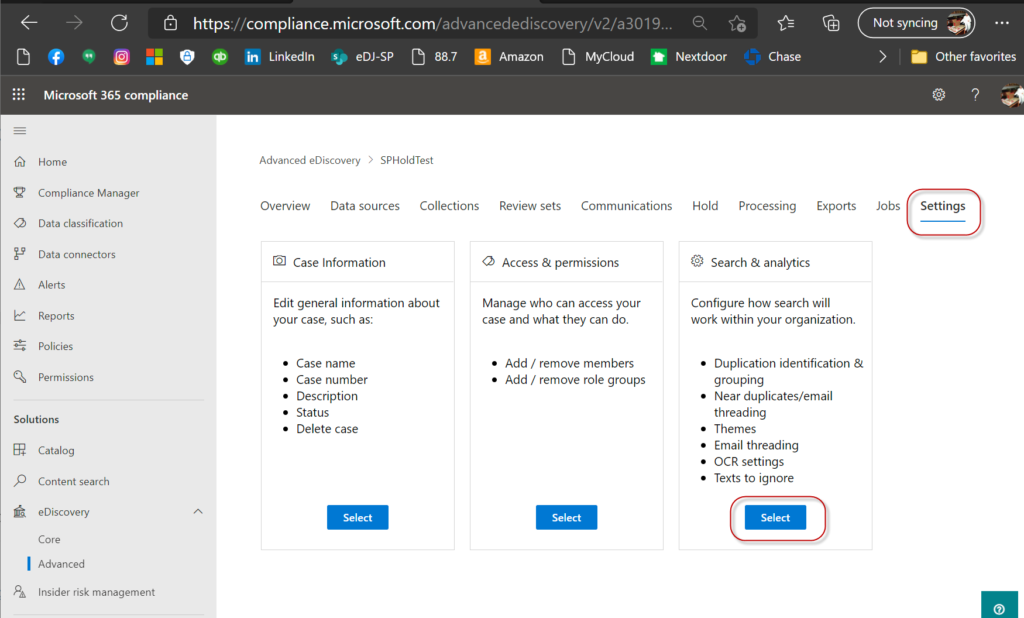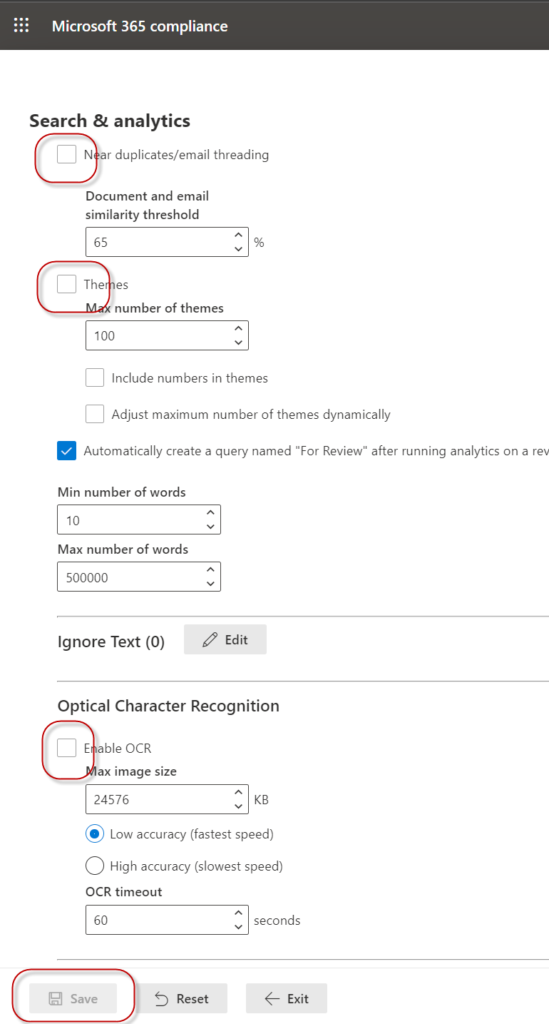A peer with a looming deadline messaged me yesterday to ask if I knew of any way to export Advanced eDiscovery (AED2) collections without processing them into a review set. Despite a vague recollection from the Spring 2021 AED webinar of a MSFT PM saying that a ‘direct to export’ collection feature was on the road map I could not find confirmation. At this point I believe that users must process collections into a review set before they can run an export. This can be painfully slow, especially in comparison to the Core eDiscovery search export. Apparently the client’s global tenant structure or access rights made some targets inaccessible via Core eDiscovery. Without direct access to debug the Core eDiscovery issues, here are my best recommendations for improved processing performance.
- Under Settings, Select Search & analytics controls.

- Uncheck Near Dups, Themes and OCR if selected by default. Save.

- Evaluate your collection sources. If they will have little or no overlap, then separate them into distinct collections for processing. If they may have significant overlap or you are using keyword criteria, then stick to one collection to prevent creation of duplicates.
- Restart your collection(s) and hope that they process faster.
I have had such varied performance experience across client tenants that I no longer even guess at GB/hr rates. The M365 eDiscovery team’s messaging seems clear. They expect users to use search criteria to limit collection sets to relatively rich review sets. AED2 is designed for this. The most recent updates and roadmaps have expanded case, collection and export limits. The ongoing changes to unify the M365 data storage architecture should increase both performance and search accuracy. In the meantime I keep getting questions like, “Does anyone actually use AED? It seems unduly cumbersome.”
My response is that EVERYONE has to use the same services and infrastructure to perform eDiscovery on M365 content, whether via AED2, Core eDiscovery, PowerShell cmdlets or an integrated partner product most likely using the Graph API. I have no firm numbers on AED2 adoption/usage, but I doubt that MSFT team would have killed AED1 without a migration path if they knew that it was being widely used. The Spring briefing made it clear that Core eDiscovery will also be going away in favor of AED2 with limited features for E3 customers. So it is better to start looking at how you can adapt your workflows to AED2 or invest in integrated eDiscovery technology. I have seen providers like Kindato create automated AED workflows to more efficiently manage corporate eDiscovery as a hybrid approach. So yes, customers do use AED and I expect that usage to increase as the product matures.
Greg Buckles wants your feedback, questions or project inquiries at Greg@eDJGroupInc.com. Contact him directly for a free 15 minute ‘Good Karma’ call. He solves problems and creates eDiscovery solutions for enterprise and law firm clients.
Greg’s blog perspectives are personal opinions and should not be interpreted as a professional judgment or advice. Greg is no longer a journalist and all perspectives are based on best public information. Blog content is neither approved nor reviewed by any providers prior to being posted. Do you want to share your own perspective? Greg is looking for practical, professional informative perspectives free of marketing fluff, hidden agendas or personal/product bias. Outside blogs will clearly indicate the author, company and any relevant affiliations.
See Greg’s latest pic on Instagram.
